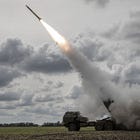What is the way forward in a war where advancing is so difficult? (Part 3)
The Persian Invasion of Greece 480 BCE
Hello All,
Well, here is the last part of what was supposed to be a one-part post on breaking stalemates (or even recovering from desperate positions) in war. Its now in its third phase, and still isnt entirely finished. I promise next week will be it. In the first part I discussed direct ways of assault, which I think are the least useful historical examples for Ukraine (Grant’s Overland Campaign and the German Michael Offensives).
Last week I discussed the occurrence of technological ‘game-changing’ technology in war (the Roman corvus as the cavity magnetron). This is certainly a hope for Ukraine, but its very hard to put all your strategic eggs in this basket. Of course Ukraine’s partners, particularly the US, could speed up this process, but as of now they don’t seem willing to do that.
So now we have the last way I outlined in the first piece as possible ways to change the course of a war that seems stalemated. That is breaking supply lines/attacking command and control. It was point 4 in the original post.
One side will have to sever or severely damage the logistics, C/C system of the other
Why this is always the better option:
I’m going to start this post with a general meditation on this way of warfare. Attacking behind the lines, cutting supplies and affecting command has always been the most efficient form of warfare—and has only grown in importance as weaponry has become more advanced and intricate over the last 300 years. That might seem like a bold statement, but its actually just logical. There are two ways to destroy the enemy’s ability to fight you—by destroying its equipment and fighting force on the battlefield itself (what we are asking Ukraine to do today) or by destroying that ability to fight before that equipment gets deployed. The latter is always the wiser choice because it means that the fighting power of your enemy is being degraded before that fighting power can be used against your own forces. It also means that the enemy needs to deploy valuable forces to defend far from the front lines—and the longer you can attack behind the front lines the more the enemy has to take away from this.
Attacking an enemy primarily head on (think the Spartans at Thermopylae) might seem brave and effective, but it means that the enemy can use its strength directly against you. Far better to weaken the enemy before they can use their forces. (You might see where this is going with my first example—the war of the Greeks and the Persians during Xerxes’ second invasion of 480-479 BCE).
Think about the logic of two situations. Do you want your enemy to use up their shells or spears firing at you, or in a train/truck/wagon behind the lines that you can deprive them of in the first place?
Now the ability to destroy equipment and military power going to the front has actually increased markedly (if you have the technology) over the previous 200 years—in particular during the last century. Before then cutting supply lines was not that easy because both the intelligence to find them and the weapons systems to destroy them were not readily available. You could send out raiding parties if you wanted to be active, or you could try to dominate the seas and thus stop your opponent from moving supplies, and both could be very effective. However, both were far more limited than the more active means of attack that exist today. However, to make the point in more detail, I thought I would talk about the Persian invasion of Greece and what actually defeated Xerxes’ army (hint—it wasnt Gerard Butler).
Fighting off Xerxes—the direct way versus the cutting of supplies.
300 (picture above) is one of the worst war movies of all time, partly because it supercharges a myth. That myth is that the self-sacrifice of a small number of Spartan hoplites under the command of King Leonidas as the pass of Thermopylae played an important role in saving Greece from the invasion force of King Xerxes of the mighty Persian Empire (properly called the Achaemenid Empire). This is a myth that has been knocking around for milennia, usually by those with a love of Spartan manliness or those who want like to believe that self-sacrifice is what wins wars.
Keep reading with a 7-day free trial
Subscribe to Phillips’s Newsletter to keep reading this post and get 7 days of free access to the full post archives.





